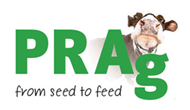Kestrel Hybrid Barley: Syngenta’s Solution to Barley Yellow Dwarf Virus (BYDV)
In an era where cereal growers face mounting pressure from climate change, evolving pest threats, and rising input costs, innovation in crop genetics has never been more critical. Enter Kestrel, Syngenta’s cutting-edge hybrid barley variety – specifically bred to tackle one of the most persistent threats to barley yields: Barley Yellow Dwarf Virus (BYDV).
What Is BYDV and Why Does It Matter?
BYDV thrives in mild winters and can overwinter in green bridge hosts, meaning it’s a constant threat, especially in early-sown crops. With reduced insecticide use due to growing resistance and regulatory pressures, genetic resistance is the most sustainable path forward.
Kestrel: A Hybrid Barley with Built-in BYDV Protection
Syngenta’s Kestrel Hybrid Barley represents a leap in barley breeding. Developed using advanced hybrid technology, Kestrel combines yield potential with robust disease resistance, most notably built-in BYDV tolerance – a feature not commonly found in conventional barley varieties.
Key Benefits of Kestrel:
-
✅ BYDV Tolerance: Offers crucial protection in high-risk seasons or regions, reducing reliance on aphicide sprays.
-
🌾 Hybrid Vigor: Delivers stronger root systems, improved early growth, and better resilience under stress.
-
📈 High Yield Potential: Proven performance across various UK trials, especially in marginal conditions.
-
⏱ Early Vigour & Competitive Growth: Outcompetes weeds and handles early sowing well.
-
💪 Strong Agronomic Package: Good lodging resistance, brackling scores, and disease tolerance across the board.
Why BYDV Resistance Is a Game-Changer
Traditional BYDV management relied heavily on multiple aphicide sprays timed precisely to control aphid populations. But with:
-
Loss of neonicotinoid seed treatments,
-
Increasing aphid resistance to pyrethroids,
-
And more unpredictable aphid migration patterns due to climate change,
…this approach is no longer sustainable or reliable.
Genetic resistance, like that in Kestrel, breaks the virus transmission cycle, providing passive protection from the moment the crop emerges. This not only helps protect yield but also supports more environmentally responsible farming by reducing pesticide usage.
Where Kestrel Fits Best
Kestrel is ideal for:
-
Growers in BYDV-prone regions
-
Early sowing slots where aphid pressure is highest,
-
Farms looking to reduce spray passes and improve sustainability.
It’s a particularly attractive choice for mixed arable-livestock farms and those involved in low-input or regenerative systems, thanks to its robust root mass and early ground cover.
Conclusion
Syngenta’s Kestrel Hybrid Barley isn’t just another high-yielding variety—it’s a smart, strategic tool in the fight against Barley Yellow Dwarf Virus. With BYDV becoming harder to control using chemicals alone, varieties like Kestrel point to the future of resilient, high-performing arable crops.
If you’re planning your next barley crop, Kestrel deserves a spot in your rotation—not just for what it yields, but for what it resists.


